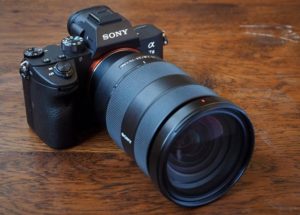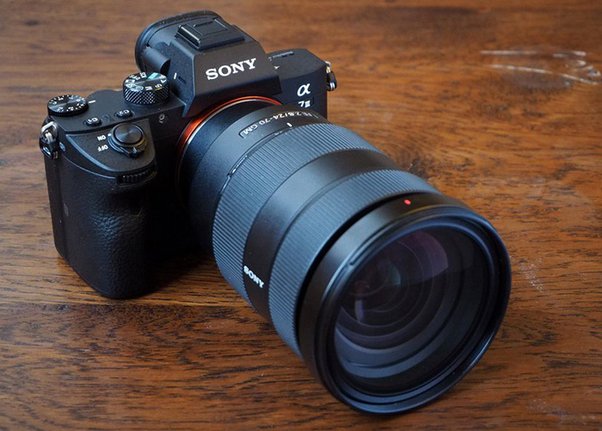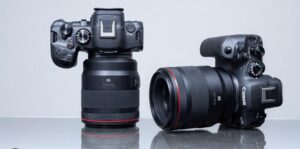The Sony A7III has been a favorite among photographers and videographers since its release in early 2018. This camera is known for its great balance of features, performance, and price. But is it still a good choice in 2024? Let’s dive in and find out.
Overview of the Sony A7III: Should You Buy The Sony A7III In 2024?
The Sony A7III was a game-changer when it first came out. It offered many high-end features at a mid-range price. This made it very popular with both hobbyists and professionals.
Key Features of the A7III:
- 24.2-megapixel full-frame sensor: This sensor delivers excellent image quality.
- 693 phase-detection autofocus points: Fast and accurate autofocus.
- 4K video recording: Great for videographers.
- Long battery life: Can last through extended shooting sessions.
These features made the A7III a strong competitor in the camera market.

Advantages of Buying the Sony A7III in 2024
Image Quality:
The A7III has a 24.2-megapixel full-frame sensor. This sensor captures detailed and vibrant images. It also performs well in low light. You can get great shots even in dim conditions. The dynamic range is impressive too. This means you can capture a lot of detail in both shadows and highlights.
Autofocus System:
The A7III’s autofocus system is fast and reliable. With 693 phase-detection points, it covers most of the frame. This helps you focus quickly and accurately. Whether you are shooting sports, wildlife, or portraits, the autofocus won’t let you down.
Video Capabilities:
The A7III can record 4K video with full pixel readout and no pixel binning. This means the video quality is high, with lots of detail and low noise. It’s a great choice for videographers. You can also shoot in various profiles, including S-Log, which is useful for color grading.
Battery Life:
One of the standout features of the A7III is its battery life. You can shoot around 710 shots on a single charge. This is more than many other mirrorless cameras. It’s especially useful for long photo shoots or when traveling.
Affordability:
Since the A7III is an older model, it is cheaper than newer cameras. This makes it a cost-effective option. You get a lot of features for a lower price. It’s a great value for those who want a full-frame camera without spending too much.
Drawbacks and Considerations
Newer Models and Technology:
Sony has released newer models in the A7 series, like the A7IV. These newer cameras have better features. They come with higher resolution sensors, improved autofocus, and better video capabilities. They also have newer processors, which means faster performance. If you want the latest technology, a newer model might be better.
Future-Proofing:
As the A7III gets older, Sony might focus more on supporting newer models. This means fewer firmware updates for the A7III. Over time, this can affect its performance and compatibility with new accessories and software.
Competitive Alternatives:
Other camera brands have also released competitive models. For example, Canon, Nikon, and Panasonic have similar cameras with advanced features. It’s worth comparing these options to see which one suits your needs best.
Use Case Scenarios
Who Should Consider the Sony A7III?
The A7III is versatile. It’s great for hobbyists who want to upgrade to a full-frame camera. It’s also suitable for professional photographers on a budget. Videographers can benefit from its 4K recording capabilities.
Specific Scenarios:
- Travel Photography: The A7III is lightweight and compact. It’s easy to carry around, making it perfect for travel. Its battery life is a big plus for shooting all day.
- Event and Wedding Photography: The fast autofocus and high image quality are ideal for capturing important moments. You won’t miss a shot, even in challenging lighting conditions.
- Studio and Portrait Photography: The full-frame sensor and dynamic range help create beautiful portraits with great detail and depth.
- Vlogging and YouTube Content Creation: The 4K video and various shooting profiles make it a solid choice for content creators. It’s versatile enough to handle different types of videos.
The Best Lenses for Sony A7III in 2024
The Sony A7III is a versatile and powerful camera, and the right lens can significantly enhance its performance. Whether you are a photographer or videographer, choosing the right lens can help you capture stunning images and videos. Here are some of the best lenses for the Sony A7III in 2024:
1. Sony FE 24-70mm f/2.8 GM
Overview:
- Type: Standard Zoom
- Focal Length: 24-70mm
- Aperture: f/2.8
Why It’s Great: The Sony FE 24-70mm f/2.8 GM is a high-quality zoom lens that offers a versatile focal range. It’s perfect for various types of photography, including landscapes, portraits, and events. The constant f/2.8 aperture provides excellent low-light performance and beautiful bokeh.
Pros:
- Versatile focal range
- Sharp image quality
- Fast and constant aperture
Cons:
- Expensive
- Relatively heavy
2. Sony FE 50mm f/1.8
Overview:
- Type: Prime
- Focal Length: 50mm
- Aperture: f/1.8
Why It’s Great: The Sony FE 50mm f/1.8 is an affordable and lightweight prime lens. It’s ideal for portrait photography due to its wide aperture, which allows for beautiful background blur and excellent low-light performance. This lens is a great choice for beginners and professionals alike.
Pros:
- Affordable
- Lightweight and compact
- Excellent bokeh
Cons:
- Slower autofocus compared to higher-end lenses
- Build quality is not as robust
3. Sony FE 16-35mm f/2.8 GM
Overview:
- Type: Wide-Angle Zoom
- Focal Length: 16-35mm
- Aperture: f/2.8
Why It’s Great: The Sony FE 16-35mm f/2.8 GM is perfect for landscape, architecture, and astrophotography. The wide-angle zoom range allows you to capture expansive scenes with stunning clarity. The constant f/2.8 aperture ensures excellent performance in low-light conditions.
Pros:
- Wide focal range for landscape and architecture
- Excellent image quality
- Constant f/2.8 aperture
Cons:
- Expensive
- Can be bulky for some users
4. Sony FE 85mm f/1.4 GM
Overview:
- Type: Prime
- Focal Length: 85mm
- Aperture: f/1.4
Why It’s Great: The Sony FE 85mm f/1.4 GM is a top choice for portrait photographers. The 85mm focal length combined with the f/1.4 aperture produces stunning portraits with creamy bokeh and sharp subject focus. It’s a premium lens that delivers professional results.
Pros:
- Exceptional image quality
- Beautiful bokeh
- Ideal for portraits
Cons:
- High price
- Heavy
5. Sony FE 70-200mm f/2.8 GM OSS
Overview:
- Type: Telephoto Zoom
- Focal Length: 70-200mm
- Aperture: f/2.8
Why It’s Great: The Sony FE 70-200mm f/2.8 GM OSS is a versatile telephoto zoom lens. It’s perfect for sports, wildlife, and portrait photography. The built-in Optical SteadyShot (OSS) helps reduce camera shake, making it easier to capture sharp images at long focal lengths.
Pros:
- Versatile telephoto range
- Built-in image stabilization
- Excellent build quality
Cons:
- Very expensive
- Large and heavy
6. Sigma 24-70mm f/2.8 DG DN Art
Overview:
- Type: Standard Zoom
- Focal Length: 24-70mm
- Aperture: f/2.8
Why It’s Great: The Sigma 24-70mm f/2.8 DG DN Art is a great alternative to the Sony 24-70mm GM lens. It offers excellent image quality and a versatile focal range at a more affordable price. It’s suitable for a wide range of photography needs.
Pros:
- Great image quality
- More affordable than Sony’s GM lens
- Versatile focal range
Cons:
- Slightly larger and heavier than the Sony equivalent
- Autofocus may be slightly slower





Pingback: Canon EOS R8 vs Canon EOS R5: A Comprehensive Comparison - Danish Alam